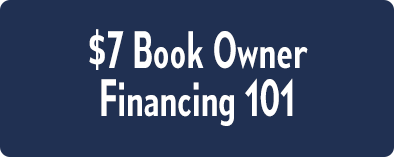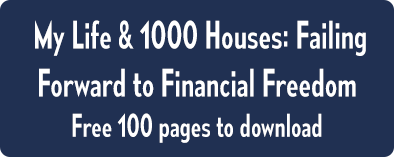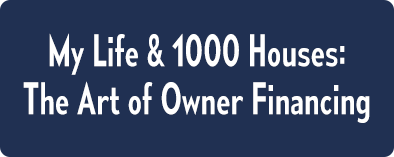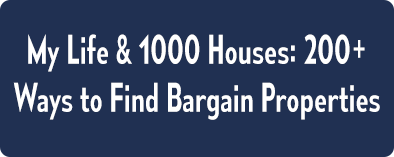PODCAST
RV Rental & Sales Spaces: Create And They Will Come
Episode 557: RV Rental & Sales Spaces: Create And They Will Come
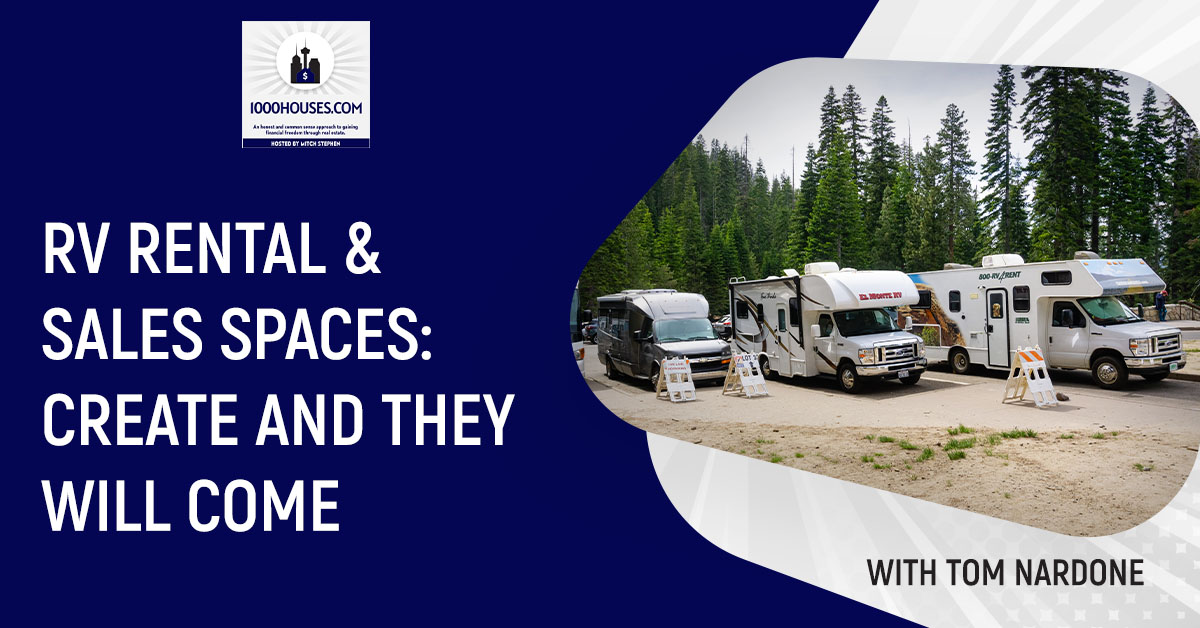
Real estate is a huge business with great potential for wealth. But just because you’ve set up your own business doesn’t already mean you’ve achieved real estate success. In this episode, we’ll hear the interesting story of Tom Nardone and get some expert advice on how to really have a thick cash flow in investing! From being a mailman to having a handsome 350 properties, Tom shares his wits and the secrets of a real estate millionaire and how you too, can do it!
—
Watch the episode here
I’m here with Tom Nardone. We’re going to be talking about his path to success. Tom, how are you doing?
I’m doing great, Mitch. Thanks for having me on the show.
Let’s get a little background of where you started from to where you are now. What does your background look like?
We probably have similar upbringings in the real estate business, and we could talk about some of the early mentors we might have learned from later. I’m here in sunny South Florida, Fort Lauderdale area. I got started in this business when I moved down from the Northeast and got a job as a letter carrier at the rightful age of nineteen and suddenly got bored with that job after several years. In 1985, there was a whole series of Robert Allen’s No Money Down seminars going across the country. You probably remember those back in the early days.
I jumped into one of those and sat next to someone who said, “If you think this is good, you need to take the Miller and Schaub course.” Jack Miller and John Schaub were teaching a course together at that time. I did attend that course. What those guys pointed out to me was they said, “Are you a mailman?” I said, “Yes.” They said, “You get to see the good stuff that we wish we could see.” That is, you’re driving around, walking around neighborhoods all day, and you get to see vacant, rundown houses. Better than that, as you remember, back in the ‘80s, we had no internet or cell phones. The US mail was it.
Back in those days, we had the RTC and the S&L crisis that was going on. I quickly realized that, “I’m delivering a lot of certified letters here from banks and mortgage companies.” The only reason a bank or mortgage company back in those days would send somebody a certified letter was if they didn’t get your payment, and it’s been 30 days or more late. I would go up to people’s doors as a mailman to deliver their mail and say, “I got a certified letter from Kislak Mortgage Company. I need you to sign for this.”
The homeowner would look at me and say, “I got to get rid of this house. Do you know anybody who wants to buy it?” I’d be standing there in my postal uniform and say, “Me, but let me come back in the evening in my civilian clothes and let’s talk about this.” All through the ‘80s and ‘90s, I pretty much didn’t have to do any lead generation because I would come across these deals on my mail routes. In many cases back then, a lot of the mortgages were even fully assumable without to do on sale clause. I’d say, “Give me your coupon book, and I’ll take over from here.” I’ll give them a $1,000 or $2,000 down. I took over a lot of mortgages and started building a portfolio of single-family houses. That’s what got me started off back in the ‘80s.
You were a landlord for a while.
I was a landlord, and I developed, as a mail carrier, a portfolio of about 36 or 37 houses, all on my mail routes. I never went outside of those boundaries and never did any fixing and flipping. I reached a point where I had enough properties that I didn’t even want another one. Quite honestly, the cashflow was thin. When you factor in vacancies, repairs and the hurricanes that like to naturally blow the roofs off every now and then, it was not an easy road.
You had the same experience I had with Reynolds. They’ve been selling a myth. They say, “You got a payment of $500. You’re collecting $900. You’re making $400 a month. That’s $4,800 a year.” You didn’t count any expenses. Every expense on the planet is on your side of the table. It was my experience about 25, 26 or 27 houses. They were running me ragged. I wasn’t making any money.
When you took us up to that last real estate appreciation, which peaked around 2005, all of a sudden cashflow was marginal, but equity-wise it looks like I had done something smart. 2007 and 2008 arrived, and I was like, “All that last fifteen years of equity appreciation peeled off in a real quick way.” It was a real struggle to hang onto the homes. It was challenging. We had a huge hurricane here that ripped all my roofs off in one day, including the house I lived in. It was a challenging time, and we all know what happened after that in 2008 or 2010.
I started liquidating the properties. I didn’t sell them all, but I sold about 75% of them and kept the best ones that I felt had the good best future potential. I started going more into fixing and flipping to generate income. We fixed and flipped over about 300 properties. It’s a good model. Next to the model that I do, which is developing mobile home lots and building site-built homes and developing property, in my opinion, it’s a way better to spend your time if you want to make chunks of cash, especially in the mobile home world. That’s where I’ve transitioned to.
Developing mobile home lots and building site-built homes is a way better way to spend your time if you want to make chunks of cash. Click To TweetPeople always say, “What strategy is the best? What should I shoot for? What should I go into in this business?” Let’s say the first thing you have to decide is, “Are you a cash guy or a cashflow guy?” because that will eliminate about half of the choices, whichever one you pick. I chose to be cashflow guy. I was selling my houses on 30-year notes where I would get the payments, but I didn’t have any of the liabilities because it wasn’t my house anymore. That’s how I got to where I was at. It was the same journey up to that point, realizing that the rental income was unpredictable. It was flimsy at best.
I seller financed a lot of mobile homes in my career. One time I bought 140 mobile homes in 60 days, and they were all in other people’s parks. All I did was buy the boxes and owner financed the boxes three times. It was a different time. We’re buying those houses. If you bought them for $20,000 at the time from the repo lots, you could buy them for $6,000 apiece. You could owner financing for $24,000 with $2,000 or $3,000 down at 14.5% before Dodd-Frank. The ROI was out of the roof. A lot of moving parts because no one takes ownership of those mobile homes when they’re on someone else’s land. When they get tired, they just leave.
They didn’t sell them. I hand someone else my payment book or anything. They walked away from them. I sold those 140 mobile homes 500 times. It’s a great business if you never want to lose any inventory or very slowly lose your inventory. Nowadays, mobile home parks seem to be all the rage, but they were selling these things at 4% and 5% cap rates before. I don’t know about it right this minute. The guy that got short in on the stick, I always thought was the developer because he couldn’t pinpoint your costs. You didn’t know. When you’re dealing with the city and all these bureaucracies, it’s hard to calculate what you’re going to be into anything for if you’re having to go through them. Do you find that to be true?
I do. If you’re not taking over an established up-and-running park that’s already cashflowing and you’re truly taking on a development deal, then you better have some good successful business model that is not that far away from you to go by. Shifting to another subject, now we have a 242-spaced park under contract that we’ve been doing our diligence over. It’s one of these things where the original owner got cancer, died and left the whole park to the wife and son. They don’t want anything to do with it.
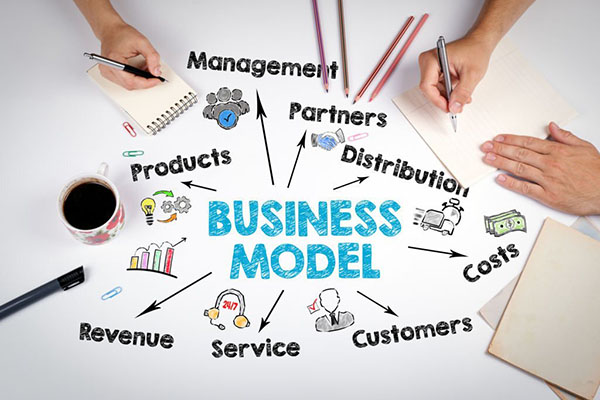
RV Rental: If you’re not taking over an established up-and-running park that’s already cash-flowing and you’re truly taking on a development deal, then you better have some really good successful business models not that far away from you to go by.
There’s already a phase 1 and 2 of this project that are already up and running and cashflowing with about 150 homes on it. In the back half, they started turning into a model that we see a lot here in Florida, and that’s the RV and park model. . Maybe you have this in Texas. That’s popular here for overnight pull-ins, the big diesel pushers that go through town and Florida. Also, Texas is a destination state for warm weather. Now is our maximum time of the year when all these parks are filling up. There are some very successful high-end RV parks around our area here that a 50-wide by 75-foot deep lot is selling for $200,000 to $400,000 on a sale model.
They are like a condo or whatever because it’s got to have some association dues and everything.
You have to provide an HOA, clubhouse, swimming pool and pickle balls, which are popular these days. We got a big lake with fishing there. There are lots of amenities, and people will pay a premium for that.
It’s a great business. I’m in the self-storage business, and everyone says, “What a cash cow.” I said, “Everything works pretty good when it’s paid for when you’re on the way to getting it paid. It’s everything you can do to get it paid off.” That’s the terrific cashflow reoccurring forever cash because that park will end when you want, at least the rental spaces. How I will look at those deals is I’m selling that back half to people for $200,000 to $400,000. If I sell enough of those at a good price, I’ll pay off the front piece where I’m collecting rent. Now I got a free and clear piece of property and cash coming in.
That’s the business plan. I don’t know if that appeals to your audience. I’ll tell you what will appeal to your readers. That is doing one-on-one scattered lots. We’ve been doing very well with these. We had three brand new double wides we ordered from the factory. We put them on scattered lots here and there. It took us a long time to find the sweet spot where you can get the dirt at the right place. It’s already zoned for mobile homes and set up a double wide on it. We have been clearing about $100,000 on each sale we do because, for some magical reason, you take a $30,000 lot and a $100,000 home. You’ve got your block level tie, set up fees and stuff like that, poorer driveway, docks, decks and stairs.
When you put it on the market, you now have a product you can sell for about $275,000. We have a lot of cash buyers that are exiting some of these Northern states with all the COVID circus that went on over the last couple of years. They’re coming down here and want a piece of this South Florida freedom and the warm weather. To find a 4-bedroom, 2-bath, 1800 square foot house is typically what we put together. That’s of value if you could buy something like that for $275,000. We don’t buy just a bare box with panels. There are lots of mobile homes out there in this day and age that they’re full drywall on the inside. They have drywall details, coffered ceilings, 42-inch wall cabinets and 9-foot ceilings. They make some very nice mobile homes that you could buy at a very attractive price.
I’ve had 2,800 square-foot triple wides. We do the same thing down here. We’ll buy the scattered lots or the individual lots, but trying to buy 10 or 20 acres and get 15 or 20 lots or even 1/2 acre lots are good. We don’t like to go less than a 1/2 acre. We’re doing the heck out of that. We do that a lot. It got us out of the competition for all the houses because it seems like in the last few years, everybody in the world’s become a house flipper. I took a left into mobile homes. It’s starting to catch on a little bit now, but for the longest time, we were the only ones out there doing it.
The other thing is we seller finance our product at 30 years with a 10% or better down. It’s a temporary cashflow, but it could go on for years. When they pay you off, my people don’t usually refi because they’re inherently flawed. The only time we get paid off is when they put it up for sale, and the realtor gets a new loan buyer and then now we’re getting a call for a payoff. We do that an awful lot. The cool thing about mobile homes is nobody wants to finance one. If you’re an owner-financer and you want it. You solve the problem of the mobile home. When you’re selling your mobile homes, are people going to the banks and getting the money, or are they mostly cash?
A lot of them have been FHA, VA or USDA. Boca Raton is the town right next door here, which is pretty high-end for South Florida, but believe it or not, we do have some mobile home subdivisions. Your readers have to know that this is not a park rent model for what we’re discussing now. We’re talking about the land that comes with the mobile home like it would with a single-family home. We have a home here. It was built in 1980. I can’t believe we put it on the market. Our buyer found a lender who financed it. You got a 30-year conventional loan on a 35-year-old mobile home. There are financing products out there.
The guy who’s doing that is probably pretty stellar. He’s probably got an 800-plus credit score or something close. I’m dealing in affordable housing. We got two different markets. It sounds like you’re dealing with people with retirement money and are trying to get the sun worshipers. They’re trying to get into the sun and get out of all those big cities. My model is a little bit different. I’m selling affordable housing. Mobile homes are the last bastion of affordable housing. That’s the last thing before you live under the bridge. You got some fantastic products. There are some mobile homes that you’d be super proud to live in. They’re built better than stick-built houses because they’re built in a controlled environment, and they’re way over-engineered because of the industry.
Another thing we’ve dipped our toe into is modulars. Six weeks after Hurricane Ian ruined thousands of houses over here on the west Florida Coast, muds are kicking in, and people are putting them up on stilts. We got one project we’re doing in the Keys where we’re putting it up about 12-foot high on stilts, and we’re building a legal habitable downstairs enclosure. It doesn’t matter if these homes are modular or mobile. It depends on what markets you’re in as to how these properties are looked at. A property in Key is a mobile home, within an hour North of Key West, even an old rundown mobile home could be worth $500,000. It depends on what market you’re in and finding a sweet spot where this will work and where you live. There are places that might be an extreme example, but the muds are a good way to go as well.

RV Rental: Your strategy should depend on what market you’re in. You need to find a sweet spot where this will work.
We’ve got a little vacation coming up in February 2023. Do you want to talk a little bit about that?
A lot of the networking and funding sources I’ve developed over the years came through going on cruises. For years I was a part of a group of guys that would go out cruising, an informal group called the Financial Friends Network. There are a lot of people on board these ships that have retirement accounts. I don’t know about you, but for a lot of the transactions we do, we try to structure it in a tax-free environment if we can. It was through going on those cruises that were educational to me that I was able to connect, meet people, go to dinner with them, walk the islands with them, and have some fun, establishing funding sources and capital partners.
The guy who was running that, who was the guy who introduced you and me, a friend of mine, Walter, that we met years ago, which I had a quick phone call with you, he decided he doesn’t want to do it anymore. He handed the torch off to us to keep these cruises going. We changed the name. It’s called Investor Addicts. We’re hosting a cruise. This is the first one that we’re doing since the whole COVID circus is over. There’s no testing required. Nobody is going to jab you to go on the cruise if you’re a non-jabber. I happen to be a non-jabber. Not to get into this road, but all the jabbed people I know wound up getting COVID anyway. What was the point?
The cruise is on February 4, 2023. We’re going to live at beautiful Miami, Florida here. We’re going to start off with a pre-party on February 3rd at Bayside Marketplace. We’re going to pick a restaurant bar, which is on my to-do list, that we can all meet at before the ship leaves the following day. It’s February 4 through 11, 2023. It’s a real bargain. It’s the Symphony of the Seas. It’s a huge ship. It’s the biggest ship out there on the water. It’s absolutely beautiful. You can google it, or better yet, you can go to the website, which is InvestorAddicts.com. All the information will be there. We got a lot of amazing speakers lined up. Mitch is going to be there. We have Randy Hughes, David Richter and a lot of names. We got more people coming on board.
There is an educational seminar fee to attend. It is $250. If you want to bring extra family members, you’re welcome to bring them. If they’re not going to attend the seminar, they don’t have to pay for the seminar. While we’re rolling on the water cruising, we’re going to be in rooms making connections and learning from each other. We like to give anybody who wants to come up to the front of the room a chance to speak. Mitch, you’ve seen over the years there’s the thing called The Power Of The Microphone or The Power Of The Podium. You speak in front of a bunch of people, and suddenly you’ll have people at the next dinner. They’ll say, “I like what you’re doing. If you ever need any dollars to make a transaction go together. Let me know.” That’s exactly what happened to me.
The reason I decided to go is because it’s not heavy on sales. I don’t think it’s going to be run to the back of the room with your credit card to kind of thing. Since we’re there and we’re all real estate investors and networking, we might as well get up there and get a little education. I, for one, will promise you I will make it worth your $250. I’ll come there loaded and drop a bunch of information that it only takes a little crumb every now and then to be worth $250 every time you turn around for a little golden nugget somewhere.
Before COVID, I used to do a vacation. I had all these followers, people that had my books and people that were asking me questions and everything. I thought, “I don’t know any of these people. I’ve never met them.” I one day said, “I’m going to go on vacation at this place and if you want to come, come.” In the first year, it was like 25 people, and in the second year, it was 48 people, then it was like 75 people. In 2021, 128 people came. The majority of them I didn’t know, but I got to know them. It was very informal, and that’s what I thought this was like. I invited my followers that kept asking me. They keep saying, “When are you going to do another vacation with Mitch?”
I say, “I’m going to do one from February the 4th to the 11th. It’s called InvestorAddicts.com. Go there and sign up. Pay the $250, and we’ll do whatever’s going on there. If we want to go to the pool, have a drink and talk more about real estate somewhere, we will.” I thought it was a good opportunity for me to get out and get on a cruise because I love the cruise, and also a chance for some of the people I hadn’t seen for a while to come and attend. I thought that would be a great benefit for your group, too, as well. That’s where I’m at.
The business model that I gave a brief overview about the profits we’re making and these scattered mobile home lots, I’m going to lay it out for people too. I’m not selling anything. We’re trying to cover the cost of doing this event. We’re going to have it videotaped. The video guy is going to offer the tapes at a nominal fee. This is not a sell-your-socks-off event by any means.
That’s like a vacation with Mitch. I told them, “I’m not selling anybody anything. I want to come, meet, talk and have conversations with people doing different strategies around the nation or the world. I want to hobnob and talk.” I always ended up making my money through private lenders or someone who would show up a month later or whatever and say they needed some help. It wasn’t about hard closing or closing at all. It was about making friends and seeing where there was a nice natural fit where someone had a need, and someone had a way of filling it. It went both ways.
Guys our age built up retirement accounts. If one guy has the deal and the other guy has the funding source for that deal, that’s a real happy marriage. We both need each other. In the past, we’ve had different IRA custodians be on board. They would offer their services and tell you anything you want to know about self-directed accounts. The beauty of what this cruise attracts is other people who have large self-directed accounts. They could invest with you, and they need you. If you have deal flow, deal flow needs a funding source and vice versa. We’ve made more deals on these cruises and made more money. It wasn’t about going there to have your socks be. This is not an educational cruise where we sell your socks off at all. It’s to network and connect and make some deals together.
I know that it works because I did the same thing, more or less. I didn’t do it all on cruises, but I did it wherever I went. When I vacationed, there were usually very wealthy people where I vacation. On the first of every month, I’ll make payments of $26 million to my private lenders, whom I borrowed for 15 years at 8% because people at a certain level don’t want the money in and out. They want to set it and forget it. They want it. It’s always good to get out there and talk and make sure you let people know what you need because if they don’t know what you need, then there’s no chance to connect.
If you want your chance at the microphone to tell people what it is you do, we’ll give folks twenty minutes. We’d like to hear what people do. I always hear other business models that maybe are slightly different from mine, and it allows me to tweak what I’m doing and make it even better. A lot of benefits come from sharing what it is you do and what it is that you need. A lot of people get up there and share their needs, “This is what I need,” and people will help you. It’s that kind of environment.
It’s a cool place to be. Anything you’d like to say out there to the newbie who’s thinking about getting into this business or even going on that cruise? What would you say to them?
There are many educational programs out there that try to get $10,000, $20,000 or $30,000 out of you for joining some kind of mentorship program. Just come on the cruise. There are cheap interior staterooms for $899. That’s your lodging, food and everything else the cruise provides, and beautiful destinations. Just go. You’ll learn so much. What you’re going to learn is that there are groups of people out there that educate and teach that are very gracious. They’re there to help you to want to see that you succeed. I say that very humbly. They want to share their thoughts and ideas with you and see how they can help you.
There are people out there that educate and teach very graciously. They're just there to help you to want to see that you succeed. Click To TweetIt’s not profit-motivated for the sake of education and trying to sell you something. That’s the important thing. As soon as I met up with this group, which the first cruise I went on was many years ago, I was amazed at how helpful the people were. I can get real competent answers from somebody who is in the trenches like you and I are, laying our own capital out there to do deals and get their opinion on something that I need to know as opposed to some instructor trying to teach out of a book type of thing.
For you guys that are crunching the numbers and you’re trying to do this, let me point out something. It’s very interesting, and some people don’t look at it. I’m always looking at all the different angles. You got a cruise here that’s probably going to cost you somewhere around, let’s say, $1,800 if you picked the stateroom with the aircon, flights and all that stuff. You’ve got to negate all your food bills for the whole seven days. You got to take that off because you’ve got to eat wherever you’re at. In this $1,800 is all your food. Maybe you can turn your air conditioner off or your heater off, depending on where you’re at, and you’re not driving your car for seven days. When you start to dissect it, it’s almost stupid not to go.
If somebody is challenged with borrowing money and they think that you got to go down to a bank and bear your soul, in the private world, it’s not like that. I’ve built these relationships up for several years now, but we borrowed several million dollars in 2022, and I’ve never filled out a loan application.
When you deal with a private individual, you get to name your terms, the rate and everything. When you deal with the bank, they tell you. The other thing is that it’s not personally guaranteed. It’s collateral only because I only borrow 65% of what I can sell the house for. All the rules change. The good news is if you’re starting out, you don’t need $1 million. You just need the first $150,000 or $200,000. No one started out with $5 million from a private lender because you couldn’t even get it out if you wanted to. Probably you were young, and it’s a good thing they didn’t give you $5 million because you might have messed up.
You don’t have to do 100 houses a year to be a real winner in this business. There are people I know that are out there doing 2 or 3 houses a month or 1 house a month. It’s changing their complete landscape. I never intended to do 100 houses a year for 30 years. I grew into it, and it seemed to be where I was comfortable. I could fund it all, find the money and have a life. A lot of people don’t want to be wealthy. What I find most people want is they don’t want to be wealthy because they don’t want to pay the price to be wealthy. What they want is they don’t want to have to worry about money.
You don't have to do a hundred houses a year to be a real winner in real estate. Click To TweetIf they need to go buy a suit for a wedding or a funeral, they’ll go buy one. No big deal. If you need to replace some tires on your car, $1,500 these days or whatever, “No big deal. I got it covered.” If you need a new car, “No big deal. I need to get a new car this year.” Most people don’t want to worry about money, but if being wealthy is something you want, you can also pursue that too. Not everybody wants to be wealthy.
The icing on top of that is also that if you’re in your 40s or 50s and you don’t have any self-directed retirement account, whether it’s a Solo(k) or a self-directed Roth IRA, we’re going to be doing a lot of discussion on this cruise about that. You can be building wealth in real estate through these self-directed accounts. When you turn 59 and a half, you’ll be able to take this money out completely tax-free. You don’t have to do all your deals in there, but do maybe one deal a year or every other year in a self-directed account so that when you are 59 and a half, you could start taking qualified distributions out of these accounts.
We have now structured our business in many different buckets, which are self-directed retirement accounts from solo 401(k)s and HSAs to ordinary self-directed Roth IRA accounts. We do a couple of deals a year in each of these buckets to keep the low tone for things. When we go to sell these, they’re tax-free. There are rules you got to follow, but if you understand those rules, they’re not that difficult. We’re going to talk a lot about that on this cruise.
There’s a reason why the rich get richer, and the poor get poorer because the rich talk about money. We talk about the latest new law that got passed, “What can you do with that law to save yourself from taxation?” The rules are the same for everybody. It doesn’t matter who you are. It’s the people that are taking advantage of these rules. Those rules are in place for a reason because they know that if people fend for their own retirements, if they start their own companies, then that’s less the government has to take care of and more taxes, frankly, that the government can collect because when you have a business and you’re moving houses, you’re moving carpet, nails, glass, shingles, and every time that product moves, there’s a tax.
Every time someone gets paid to install it, there’s a tax. Every time someone fires up a truck to roll down the road, there’s a gasoline tax, a tire tax and a toll road. They know if you give people incentives, which what people call loopholes, they’re not loopholes, they’re laws that you can get through and not have to pay. The government does it on purpose to move an economy. It’s that simple. Tom, I appreciate you being on. If you want to make the pre-launch party, it’s on February 3, 2023. Go to InvestorAddicts.com. Get all the information. Don’t wait too long. If you want to get in on this, at least get your cruise and airline tickets. Get your hotel room if you’re going a day early. I always suggest you go one day early because if flights get messed up, that cruise ship’s not waiting for anybody. That could be a real big problem.
You’ll catch the pre-party as a bonus on February 3, 2023.
What time is the pre-party?
It’s going to be 7:00 PM on the 3rd.
Anything else you want to add before we wrap it up?
No, that’s it for now. You and I will catch up on the ship as well, as we got a lot more things in common that you’d be surprised to know.
It’s going to be fun. I crossed over 600 archive shows. If this one didn’t fit your cup of tea, there’s bound to be some of them that are over there that would be dead on for you because you don’t do 600 shows and do not cover a lot of ground. We’re out of here. See you later, Tom.
Important Links
- 1000Houses.com/Nardone
- 1000Houses.com/Tff – TaxFree Future Consult
- 1000Houses.com/Aof – Free Training Creative Real Estate Investing
- 1000Houses.com/100 – Get First 100 pages of Mitch’s book
- 1000Houses.com/Books – Mitch’s Books
About Tom Nardone
 Tom started working for the Post Office as a mailman back in the 80’s. It didn’t take him long to realize that the security entrapment of a “good job” is not a lot different from a 30 year jail sentence. “You feel trapped, and your income is limited.”
Tom started working for the Post Office as a mailman back in the 80’s. It didn’t take him long to realize that the security entrapment of a “good job” is not a lot different from a 30 year jail sentence. “You feel trapped, and your income is limited.”
Tom started buying houses on his mail routes and After 25 years of buying and holding and buying and selling, Tom has bought over 350 properties.
Tom co-authored the book: Secrets of the Real Estate Millionaires and has created and written courses for several real estate information products. Tom has been twice featured on television with two appearances on Good Morning America with Charles Gibson and Joan London and also CNBC’s Power Lunch with Bill Griffith, with radio appearances on The Cash Flow Show and Real Estate related Podcasts.
Tom now specializes in developing Mobile Homes and building Site Built homes on scattered lots.
Love the show? Subscribe, rate, review, and share!
Join the Real Estate Investor Summit Community:
- reinvestorsummit.com
- Real Estate Investor Summit Facebook
- Real Estate Investor Summit Twitter
- Real Estate Investor Summit YouTube
- Mitch Stephen LinkedIn

